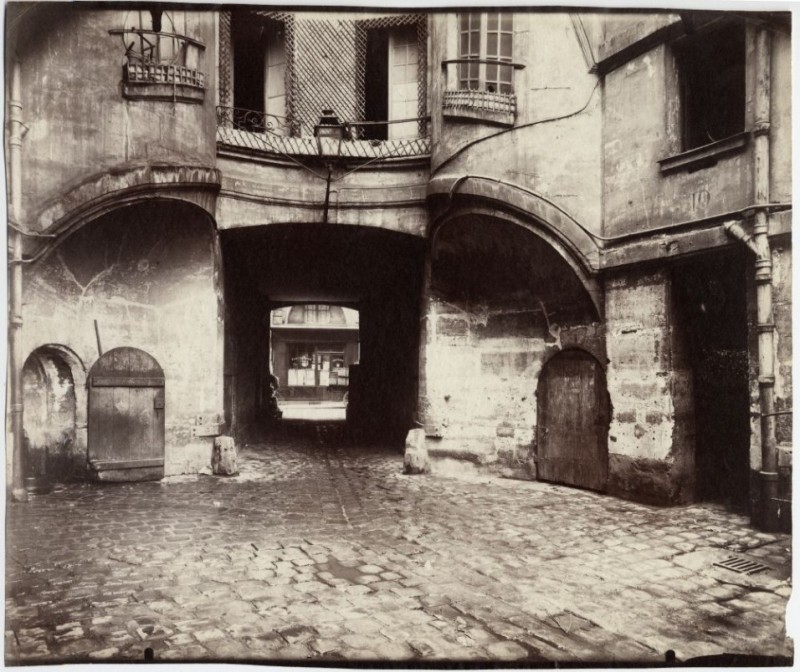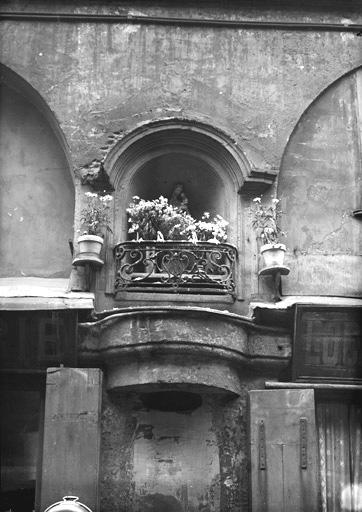
1934 – La Cour du Dragon
La Cours du Dragon (The Dragon’s Court), which once stood at 50/54 Rue de Rennes, was constructed between 1730 and 1735. Back then, the passage opened onto the former Rue de l’Egout, opposite Rue Sainte Marguerite. A second exit onto what is today known as Rue de Dragon was knocked through at a later date. The location was celebrated for its monumental gateway, overhung with a statue of Saint Marguerite’s Dragon. It was a passage of stalls and workshops which housed steelworkers, coppersmiths, and lead and iron workshops.
The Cours du Dragon escaped destruction during the construction of the Rue de Rennes in 1853 (see article here) and the widening of Boulevard Saint Germain in 1866. It became a popular curiosity for Parisians during the 19th century, since it hinted at an architectural past before the Haussmann era. Though it was steadily abandoned over time, the Cours still housed 80 families by 1900. Even its categorisation as an historical monument in 1820, however, did not save it from demolition in 1934. The gateway and the statue were intended to be preserved, but the latter had become so brittle over time that it collapsed into pieces during the ‘dismantling’ process.
For about 20 years, the location was left as an abandoned lot, and was eventually replaced by modern buildings and commercial unites in 1955. In memory of the site’s history, a new dragon was placed over the entry way to this complex – the last trace of the Cours du Dragon. The shattered fragments of the original are kept in the basement of the Louvre.
(traduction: Tim Mc Inerney)
LOCALISER / LOCATE

















2 réponses
Anonymous
Thank you for this wonderful collection of images. I have always been fascinated by Cour Du Dragon and its history. It must have been a magical place. Phil Manchester, UK
Wibbley!
WIBBLEY! A group of teens went into the court, and then a dragon came, and then the dragon ate the teens, and then the dragon flew away, and then the dragon became the king of France, and then the street vanished again, and then the dragon was sad, and then the dragons became very, very sad, and then the dragon cried on Paris because it was very sad.